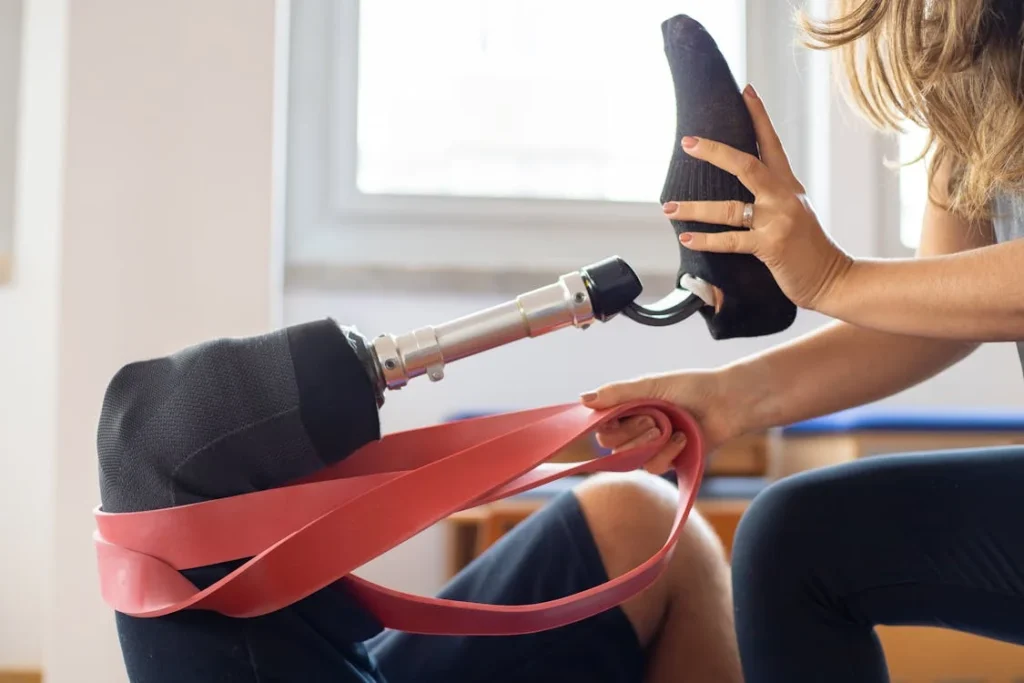After an amputation, many patients have one big question: when should I start physical therapy? It’s a question we hear often, and it’s a very important one. Physical therapy is one of the key steps in healing. It helps you regain strength, improve balance, and prepare for using a prosthetic limb. But it’s not always clear when the right time to begin is.
The answer isn’t the same for everyone. It depends on your surgery, your overall health, and how your body is healing. But what we can tell you is this — the sooner you start moving the right way, with the right guidance, the better your chances of a smoother recovery.
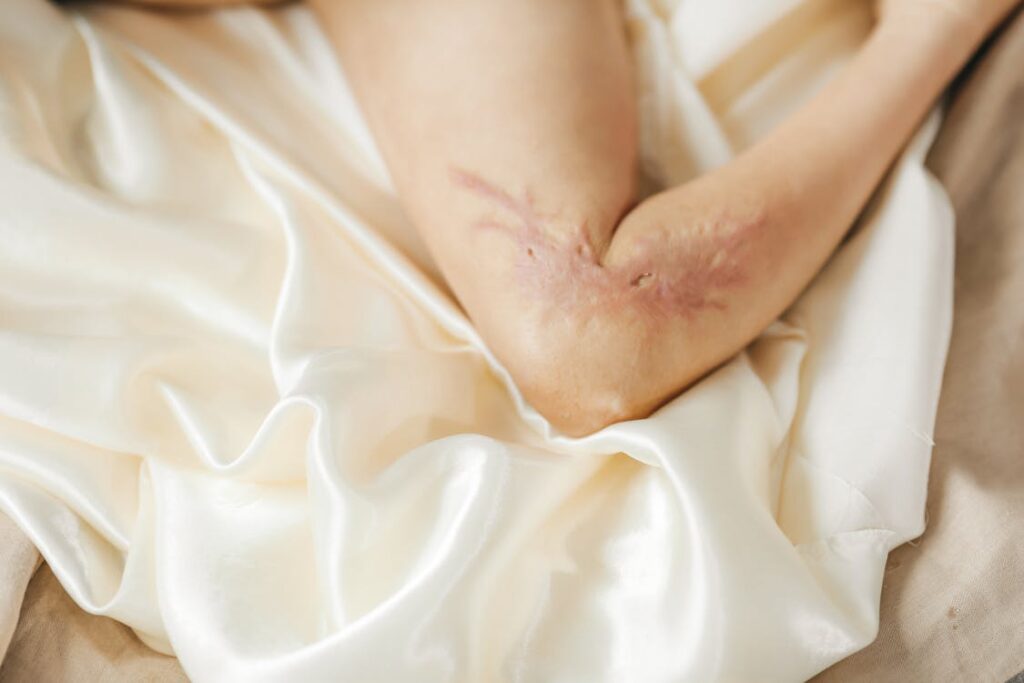
The First Days After Surgery: What Happens Before Therapy Begins
Letting the Body Rest and Heal
The first few days after an amputation are all about rest. This is when your body starts healing from the surgery.
Your doctors and nurses focus on keeping the wound clean, managing your pain, and preventing complications like infection or blood clots.
During this time, you won’t be doing any serious exercises — and that’s okay. Your body needs time to recover.
Even though you’re not doing formal therapy right away, small movements are still important. You may be asked to wiggle your toes (if you’ve had a partial foot amputation) or move your arms and upper body to keep your blood flowing.
Breathing deeply and shifting positions in bed also helps. These small actions protect you from stiffness and other problems that can come from staying in one position too long.
What you should avoid during this time is putting any pressure on your surgical site. The wound is fresh, the tissues are tender, and your body is just beginning to adjust.
Trying to move too soon — or without guidance — could delay healing or even cause injury. So this early stage is all about rest, observation, and gentle movement under supervision.
Meeting Your Physical Therapist Early On
In many hospitals, you’ll meet a physical therapist within a few days after your surgery. This might seem fast, but the goal isn’t to jump into exercise right away. It’s to start planning.
Your therapist will look at how you’re healing and talk to your doctors about your progress. They’ll explain what therapy will look like in the coming days and weeks.
They might check your range of motion, observe how you sit up in bed, and help you begin light movements to prevent stiffness.
What they won’t do at this stage is push you. Every step is measured and careful. At Robobionics, we always remind patients that this is a marathon, not a sprint.
There’s no prize for rushing. The goal is steady, safe progress that supports your full recovery.
One of the most important things your therapist will do is help prevent “contractures.” This is when muscles or joints tighten and become hard to move. It can happen when a limb stays in one position for too long.
For example, if a person keeps their leg bent all the time after a below-the-knee amputation, they might find it hard to straighten it later — and that can make walking with a prosthetic more difficult.
Your therapist will teach you simple positions and movements to avoid this.
Gentle Movement Begins Sooner Than You Think
Depending on your surgery and condition, light exercises can begin within a week or two. These aren’t high-intensity workouts.
They’re simple activities that help you build strength in your remaining limb, your core, and your upper body.
You may start with sitting up at the edge of the bed, transferring to a chair, or doing simple arm movements.
These early exercises are meant to wake your muscles up and get them working again. It might feel frustrating if you’re someone who was very active before your surgery.
But this stage is not about speed — it’s about giving your body the foundation it needs to handle more later.
Your therapist will also help you manage balance. After an amputation, your body’s weight shifts. You’ll need to relearn how to sit, stand, and eventually walk. That journey starts with learning how to feel stable again.
In these early sessions, the most powerful thing you can do is show up. Even if you’re tired or unsure, each small movement brings you closer to recovery.
Consistency is more important than effort. It’s not about how much you do — it’s about doing a little every day and building from there.
Emotional Support and Motivation
Let’s talk about something that’s often overlooked in physical therapy: emotions. The first days and weeks after an amputation can be an emotional rollercoaster.
You might feel angry, confused, or even numb. These feelings are natural, but they can affect your motivation to move or participate in therapy.
That’s why having emotional support is just as important as physical support. Some hospitals offer counseling or support groups. Even having a friend or family member by your side during therapy can make a big difference.
At Robobionics, we encourage our patients to take part in peer programs, where new amputees can speak to people who’ve already gone through the process.
It’s amazing what a few words of encouragement from someone who’s “been there” can do.
Your physical therapist can also be a great source of support. They’ve seen the journey many times. They understand the ups and downs. And most importantly, they know how to guide you without judgment.
Be honest with them. If something hurts, say it. If you feel scared, say that too. Open communication builds trust — and trust makes therapy more effective.
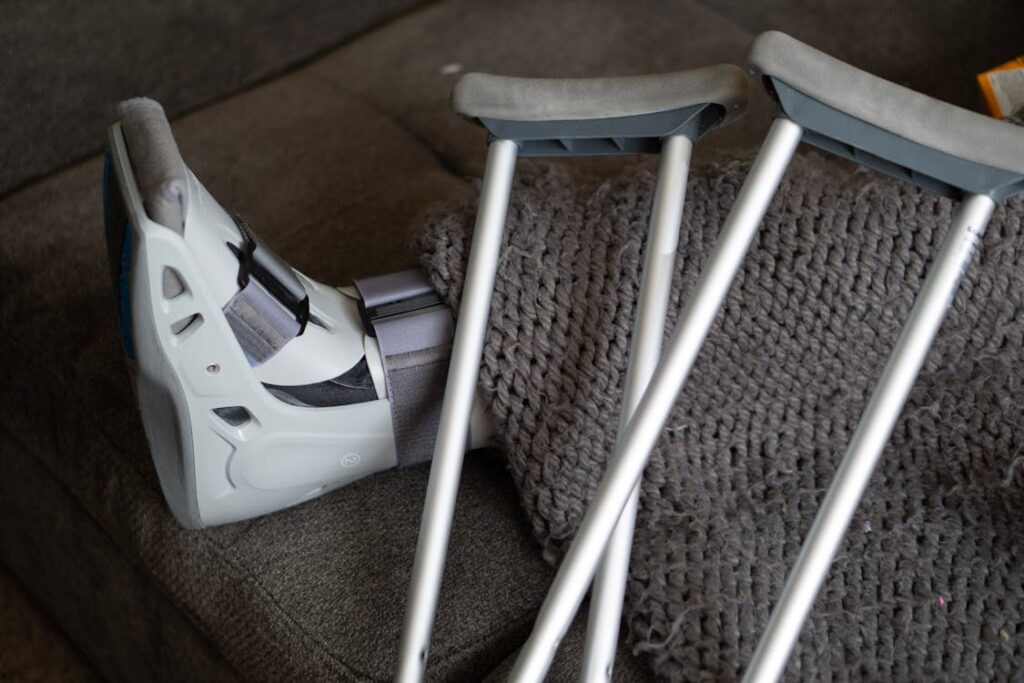
Moving Into Early Rehabilitation: Regaining Control One Step at a Time
Transitioning From the Hospital to Home
Once your surgical wound has started to heal and your overall condition has improved, your medical team may decide it’s time for you to go home. This is a big step.
You’re no longer in a hospital room with nurses checking in every few hours. You’re in your own space — more comfortable, yes, but also more independent. This is where physical therapy starts to become even more important.
Now, the focus shifts from basic healing to building strength, restoring mobility, and helping you get back to everyday activities.
At this stage, you might be working with a physiotherapist at home or visiting a rehab center several times a week. Either way, the work continues — slowly and carefully.
The exercises you do now are a bit more active. You may be asked to start weight shifts, seated balance training, or practice getting in and out of a wheelchair safely.
If your upper limb is affected, therapy may involve activities like reaching, gripping, and learning to use your non-dominant hand more effectively.
Everything you’re doing now is preparing your body for what’s coming next: prosthetic fitting and mobility.
Strengthening Your Muscles for Daily Life
After an amputation, the muscles in your body need time and effort to adjust. Some muscles may become weaker from lack of use. Others may have to take on new roles.
For example, if you’ve had a below-knee amputation, your upper leg and core muscles must become stronger to help you stand, balance, and eventually walk again.
This is where strength training becomes a part of your therapy. You won’t be lifting weights in a gym. But you will be doing movements that challenge your muscles.
This might include straightening your leg, raising it off the bed, or holding positions that build endurance. For upper limb amputees, this could mean resistance exercises to strengthen your shoulder, back, or chest.
All of this work has a purpose. It’s not just about getting strong — it’s about becoming steady, balanced, and ready for the physical demands of life with a prosthesis.
Simple actions like bending down, turning around, or climbing stairs become much easier when your muscles are trained to support you properly.
Your therapist will guide you carefully, making sure the exercises are safe, effective, and tailored to your progress.
You’ll likely feel tired — sometimes even sore — but it’s a healthy kind of tired. It means your body is responding, getting stronger, and building resilience.
Managing Pain and Phantom Limb Sensations
As your activity level increases, you might notice new types of pain or discomfort. One common experience is phantom limb sensation — the feeling that your missing limb is still there.
For some, it’s a harmless tingling. For others, it feels like itching, warmth, or even sharp pain. These sensations can be confusing and upsetting, especially if you don’t know what’s causing them.
The truth is, phantom limb sensations are normal. They happen because your brain hasn’t fully adapted to the changes in your body. It’s still sending signals to nerves that used to go to the now-absent limb. And those nerves still respond.
Physical therapy can help manage these sensations. Your therapist may use desensitization techniques, such as massaging the residual limb, applying different textures, or teaching you how to gently tap or rub the area.
These activities help retrain your nervous system to adjust to the new structure of your body.
Pain in the residual limb can also occur. This might be from swelling, pressure, or tension in healing tissues. Your therapist will guide you through stretching exercises and position changes that ease discomfort.
Heat or cold therapy, if recommended, can also provide relief. Most importantly, your therapy sessions will help you understand the difference between pain that’s part of healing — and pain that needs medical attention.
Building Confidence Through Movement
As you move deeper into physical therapy, something special starts to happen: your confidence grows.
The first time you sit up by yourself, shift weight, or take a few steps with a walker, it may feel like a small victory. But every one of these moments adds up. They help you believe in your body again.
This emotional confidence is just as important as muscle strength or flexibility.
When you trust your body to move safely, you become more willing to try new things — walking farther, standing longer, or doing chores around the house. These are the building blocks of independence.
At Robobionics, we always remind our patients that progress looks different for everyone. Some people walk again within a few months.
Others take longer, especially if they’re managing other health issues. What matters most is that you keep moving forward. Therapy is not about comparing yourself to others. It’s about getting better than you were yesterday.
If you ever feel stuck or discouraged, talk to your therapist. They can adjust your plan, introduce new exercises, or help you set short-term goals that feel achievable.
Celebrating those small wins — like walking from your bedroom to the kitchen — can keep you motivated for the bigger milestones ahead.
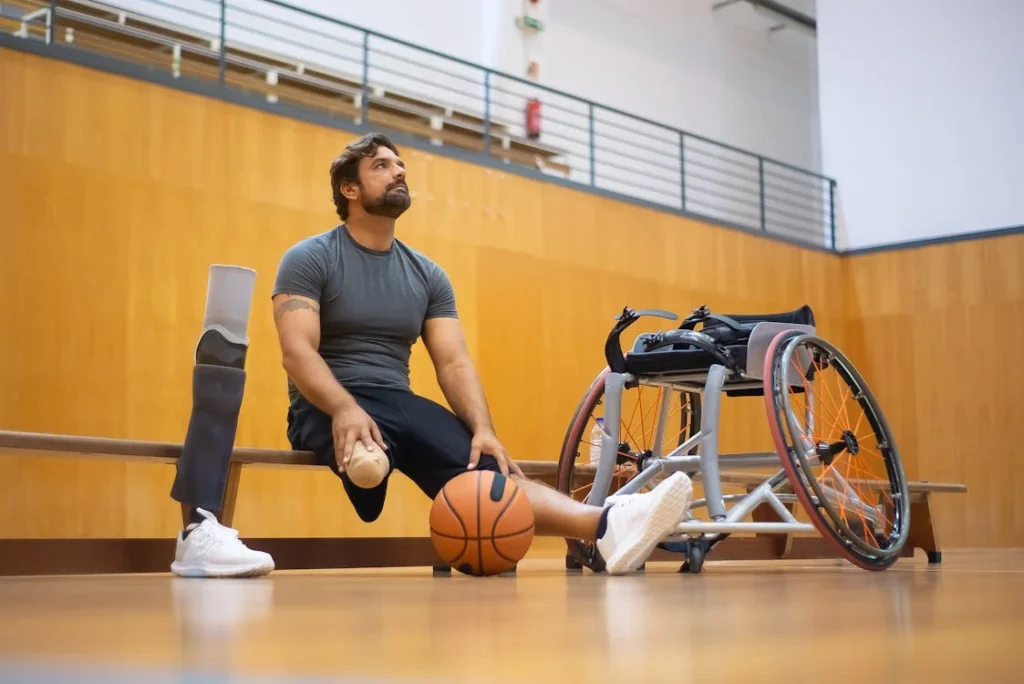
Preparing for Prosthetic Fitting: A New Chapter in Therapy
Understanding When the Time is Right
After weeks of consistent therapy and wound healing, you’ll likely start wondering, When will I get my prosthesis? This is a major milestone, but it isn’t rushed.
The decision to begin prosthetic training is made only when your residual limb is ready — both physically and medically.
Your doctor and prosthetist will check for a few key things: the wound must be fully closed, there should be no signs of infection, the swelling should be controlled, and the limb must have taken on a stable shape.
If these things are in place, your prosthetist can begin the process of measuring and designing your custom prosthetic.
During this time, your physical therapist will continue helping you strengthen muscles, maintain flexibility, and build endurance.
These exercises are crucial because they lay the foundation for prosthetic use. If your core and remaining limbs are strong, you’ll be able to adapt faster once the prosthetic is fitted.
Many patients are surprised to learn that therapy doesn’t stop once the prosthetic arrives. In fact, that’s when things really begin to shift.
Learning to Move With a Prosthetic
When you first wear your prosthetic, it might feel strange or even uncomfortable. That’s completely normal. It takes time for your body to adjust. This is where physical therapy becomes even more important.
Your therapist will help you take your first steps with the device. These sessions are often short at the beginning, focusing on simple tasks like standing, balancing, and shifting your weight.
The goal is to train your body to move naturally and safely. You’ll learn where to place your foot, how to bend your knee, and how to walk with rhythm and control.
These movements may feel clumsy at first. You might feel off-balance or unsure. But that’s okay. Everyone goes through this learning curve.
The key is patience and repetition. Over time, your body begins to adjust — muscles respond faster, balance improves, and the prosthetic begins to feel like a part of you rather than something separate.
Your therapist may also teach you how to fall safely and how to get up again. This is not meant to scare you — it’s meant to empower you.
Knowing how to handle a fall helps you stay calm and avoid injury. It’s one more way that therapy builds confidence, not just strength.
Practicing Daily Tasks
As you grow more comfortable using the prosthetic, therapy begins to focus on real-life movement. This includes standing from a chair, walking on uneven ground, going up and down stairs, or turning in tight spaces.
You may also practice carrying light objects or moving from one surface to another.
These tasks are harder than they sound. Even something simple like turning around in a narrow kitchen or reaching into a cupboard requires good balance and coordination.
Your therapist will guide you step-by-step, helping you break down each movement and master it safely.
For upper limb amputees, daily tasks might include buttoning a shirt, opening containers, or using utensils.
Therapy focuses on adapting these tasks to your new limb, whether it’s a prosthetic arm or your non-dominant hand taking on more responsibility.
This stage is one of the most rewarding because you start seeing the results of your hard work. You’re no longer just doing exercises — you’re gaining real skills that improve your independence.
Adjusting the Prosthetic Based on Therapy Feedback
One important thing to understand is that prosthetic fitting is not a one-time event. As you begin using it in therapy, you and your therapist will likely notice things that need adjusting.
Maybe the socket feels too tight in one spot, or the alignment makes it harder to walk straight. These are normal parts of the process.
Every feedback you give during therapy helps your prosthetist make changes that improve the fit and comfort of your device.
Don’t hesitate to speak up. Even small discomforts, if ignored, can lead to sores, muscle strain, or balance issues. Your body is learning, and so is your prosthetic. They evolve together.
This teamwork — between you, your therapist, and your prosthetist — is what leads to the best outcomes. Regular communication and adjustments keep you moving forward, both literally and emotionally.
Tracking Progress and Setting New Goals
At this point in your therapy journey, you’ve likely overcome major hurdles. You’ve healed from surgery, built up strength, learned to balance, and taken your first steps with a prosthetic. That’s a lot to be proud of.
But recovery doesn’t stop here.
Your therapist will help you set new goals based on what’s important to you. Maybe it’s walking longer distances, returning to work, or doing household chores without help.
Maybe it’s playing a sport, traveling, or simply climbing a flight of stairs with confidence.
Each goal gives your therapy purpose and direction. And every small step you take toward those goals brings you closer to a life of independence and mobility.
Therapy may become less frequent as you gain skills, but it never becomes less important. You’ll always benefit from occasional check-ins, new challenges, and updated routines.
Physical therapy is not just a recovery plan — it’s a lifelong partner in helping you move well, stay safe, and live fully.

Healing the Mind Through Movement: The Emotional Impact of Physical Therapy
Why Physical Recovery Alone Isn’t Enough
After an amputation, the changes in your body are obvious — but the changes in your mind are just as real.
The truth is, even with the best prosthesis, perfect wound healing, and strong muscles, it can still feel like something’s missing. That’s not weakness — that’s part of the human experience.
Amputation doesn’t just affect how you walk or move. It changes how you see yourself, how you relate to others, and how confident you feel in your own body.
These emotional effects can be quiet and subtle, or loud and overwhelming. They often come in waves. One day you may feel strong. The next, uncertain. And that’s completely normal.
But here’s what many people don’t expect — physical therapy can help your mind heal too.
Rebuilding Identity Through Small Wins
Every time you get out of bed, stretch your limbs, take a step, or lift your body weight, you’re not just training your muscles. You’re proving something to yourself.
You’re learning that even though life has changed, you still have control. You’re still capable. You’re still you.
In the beginning, progress might feel frustratingly slow. You may struggle with movements that once came easily. You might feel like a stranger in your own skin.
But as therapy becomes a routine, each success — no matter how small — brings a powerful emotional boost.
The first time you balance on your own. The first time you take a step without help. The first time you finish an exercise that felt impossible two weeks ago.
These are more than just physical milestones. They’re emotional victories. They rebuild your self-image and give you the confidence to face life with more courage.
At Robobionics, we often tell patients that therapy is not just about getting stronger — it’s about remembering your strength.
Therapy as Structure in a Time of Chaos
After surgery, it’s easy to feel like your life has been flipped upside down. You go from independence to dependence.
From walking freely to needing assistance. From knowing what your body can do to questioning everything.
In these moments, physical therapy provides something deeply valuable: structure. It gives you a schedule, a purpose, and a clear plan.
It breaks the chaos into manageable steps. Instead of thinking about everything you’ve lost, you start focusing on what you can do — today, right now.
Therapists often become a source of emotional support. They see your progress. They remind you of how far you’ve come when you forget.
And because they’re trained to work with amputees, they understand your emotional highs and lows, even when you don’t speak them out loud.
This support is a lifeline, especially during the early months. It’s not just your body that benefits — it’s your whole sense of stability.
Movement as a Mood Booster
Science backs this up, too. Physical activity releases chemicals in your brain like endorphins and serotonin — natural mood lifters.
These help reduce feelings of sadness, frustration, and even depression. And unlike medications, they come with no side effects, just the benefits of movement.
Even light exercises, such as stretches or breathing movements, can make you feel more awake, more focused, and more positive.
When you feel stuck emotionally, sometimes moving your body is the fastest way to shake that feeling.
Therapy becomes a form of active meditation. While you’re focusing on your posture, your breathing, your steps, you’re giving your mind a break from overthinking. And that mental rest can be as healing as the physical work.
Handling Setbacks With Resilience
No journey is perfect. Some days, you’ll feel pain. Other days, the prosthetic won’t fit quite right. You may feel tired, discouraged, or even angry.
That’s where the emotional strength you’ve been building — through therapy — begins to show.
Because therapy teaches you to keep going. To try again. To be okay with slow days, as long as you don’t stop.
This mindset shift is one of the most powerful parts of recovery. It’s what turns setbacks into setups for growth. It’s what helps you laugh at the stumbles, take a breath, and try again the next day.
And every time you get back up, physically or emotionally, you’re proving something incredible to yourself: that you can adapt, overcome, and move forward.
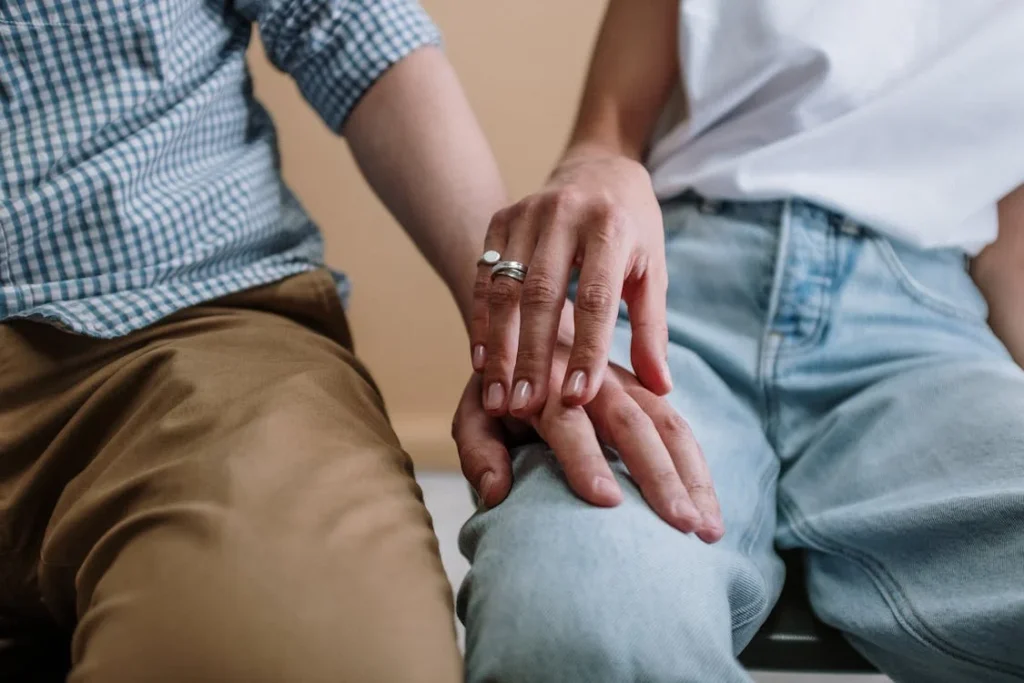
The Role of Family and Caregivers in Physical Therapy After Amputation
Why Support at Home Changes Everything
Physical therapy sessions may happen at a clinic or with a visiting physiotherapist, but recovery doesn’t stop when the session ends.
In fact, most of the healing happens at home — between the sessions. That’s where the role of family and caregivers becomes so powerful.
When someone loses a limb, they’re not just adjusting to physical limitations. They’re also dealing with new routines, unfamiliar challenges, and deep emotional shifts.
A strong, understanding support system can make therapy feel less like a burden and more like a team effort.
At Robobionics, we’ve seen firsthand how powerful the involvement of family can be. Whether it’s helping with exercises, keeping spirits high, or simply being present — the impact is huge.
Helping Without Hovering
One of the hardest things for caregivers to learn is how to help without doing too much. It’s natural to want to assist with everything — especially if your loved one is in pain, tired, or moving slower than before. But doing too much can actually slow down their progress.
Therapy is designed to restore independence. That means the person going through recovery needs to try, fail, try again, and slowly succeed on their own.
Your job isn’t to remove the challenge, but to stand close by in case support is needed.
For example, if your loved one is learning how to sit up from bed, don’t rush in to lift them. Let them attempt it first.
If they struggle, offer a suggestion or ask, “Do you want help?” This simple act of waiting gives them space to grow, while also showing that you’re there when needed.
Encouragement is far more powerful than instruction. Celebrate the effort, not just the success. A small comment like “You’re doing better than yesterday” can be more motivating than any advice.
Creating a Therapy-Friendly Home
A home environment can either support or hinder physical therapy. You don’t need to make major renovations, but small adjustments can make daily movement easier and safer.
For example, make sure there’s a clear path from bed to bathroom. Remove loose rugs or cords that could cause a fall. Keep frequently used items — like clothes, toiletries, or water — at waist height so they’re easy to reach.
If stairs are involved, talk to the physiotherapist about how to manage them safely, or whether temporary alternatives can help.
Most importantly, create a space for home exercises. It doesn’t have to be fancy. Just a firm chair, good lighting, and a little floor space.
Having a designated area reminds your loved one that therapy is part of daily life — not something separate or special.
A calm, quiet atmosphere also helps. Recovery can be mentally exhausting. Loud noises, frequent interruptions, or high-pressure expectations can increase stress. Try to keep the home environment supportive and relaxed.
Learning the Therapy Plan
Many caregivers feel unsure because they don’t know what exercises are being done or how to help. That’s why it’s a good idea to be part of a few therapy sessions.
Ask questions. Watch how the therapist guides the movements. Learn how to offer support safely.
Understanding the therapy plan helps you become a more confident assistant. You’ll know when to help, how to adjust the environment, and how to gently encourage practice throughout the day.
If you’re unsure about anything — from proper limb positioning to how often exercises should be done — don’t guess.
Call the therapist. Most professionals welcome caregiver involvement and are happy to clarify instructions or demonstrate techniques again.
This shared knowledge helps build consistency. If everyone at home is on the same page, your loved one gets a clearer, more stable recovery path.
Supporting the Mind, Not Just the Body
Perhaps the most powerful thing a caregiver can offer is emotional support. There will be tough days. Pain, frustration, fatigue, and even self-doubt are part of the journey.
On these days, your words, your patience, and your presence matter more than anything.
Let your loved one talk without judgment. Be okay with silence too. Sometimes the best thing you can do is sit together, without trying to fix anything.
Avoid unrealistic pressure. Healing takes time. Some days will feel like progress. Others will feel like setbacks. Remind them that both are normal. The fact that they’re showing up — doing the work — is already a win.
And don’t forget to care for yourself. Supporting someone through recovery can be exhausting. Make space for your own rest, mental breaks, and emotional health. A strong caregiver is one who stays balanced and recharged.
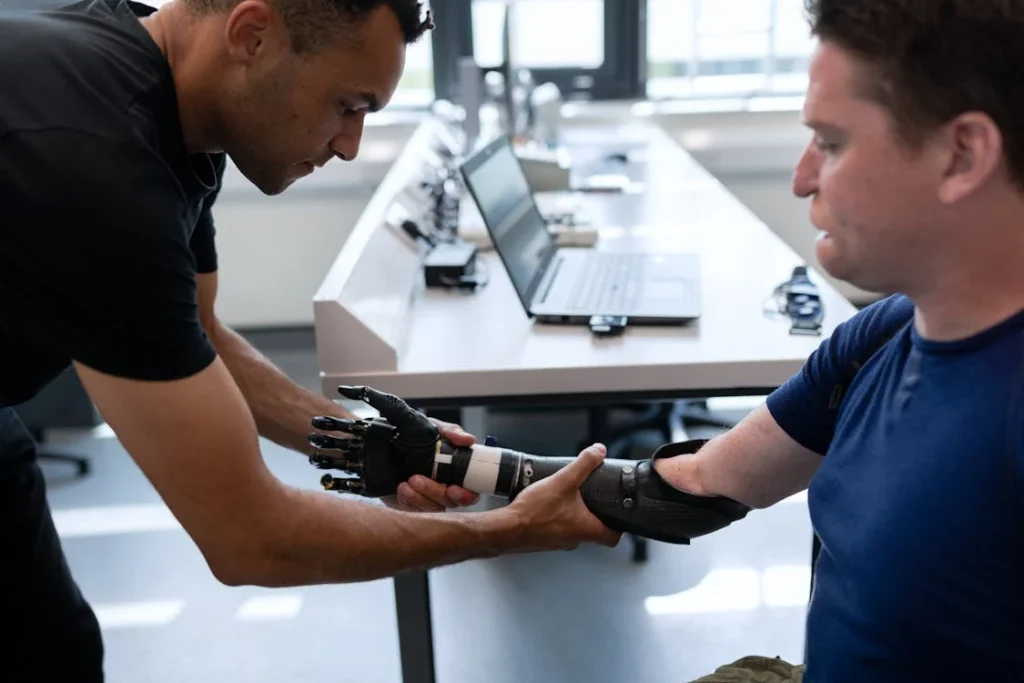
Tracking Progress in Physical Therapy: Making Every Step Count
Why Tracking Matters More Than You Think
Physical therapy after an amputation is not always a straight path. Some days feel like huge leaps forward. Other days feel like you’re standing still or even going backward. This emotional rollercoaster can be discouraging — unless you have a way to see the bigger picture.
That’s where tracking progress becomes a game-changer.
When you track your therapy journey, you’re doing more than measuring movements. You’re capturing wins, noticing patterns, and learning what works.
More importantly, you’re creating proof of progress — something to look back on when motivation dips.
At Robobionics, we often remind our patients: when you can see your progress, you stay connected to your purpose.
What Progress Really Looks Like
Most people think of progress as big milestones — like walking again, fitting a prosthesis, or climbing stairs. And while those are important, they don’t tell the full story.
Progress can be subtle. It might look like waking up with less pain, sitting up in bed faster, or needing fewer breaks during exercises.
It might be fewer stumbles when balancing or needing less help from a family member. It could even be something emotional — feeling less anxious before a therapy session, or more confident using your prosthetic in public.
These details matter. They show that your body and mind are adapting, even if you don’t notice the changes day to day.
How to Track Your Recovery Journey
You don’t need expensive apps or medical charts to track your therapy progress. A simple notebook or journal can be just as powerful.
Start with a daily or weekly entry. Write down what exercises you did, how they felt, and anything that was easier (or harder) than last time.
Include emotional notes, too. Were you feeling focused? Tired? Excited? These patterns can help you understand your energy levels and make sense of ups and downs.
For those who like structure, you can use a simple format:
- Date: When you did the therapy
- Activities: What you practiced (e.g., balance work, stair training)
- Feelings: Physical or emotional response
- Progress Notes: What improved, what didn’t, what surprised you
Over time, you’ll begin to notice patterns. Maybe your balance is better in the morning. Maybe your pain improves after certain stretches.
These insights aren’t just helpful — they’re empowering. They give you more control over your recovery and help your therapist make smarter adjustments.
You can also take occasional videos or photos — with guidance. Watching your posture or movement over time can reveal changes that are hard to feel in the moment.
Many patients find motivation in seeing a side-by-side video from Week 1 and Week 6. The change is often far more dramatic than they realized.
Sharing Progress With Your Therapy Team
Don’t keep your tracking to yourself. Share it with your physiotherapist. They can use your notes to fine-tune your program, prevent injury, or offer more advanced challenges when you’re ready.
It also helps build a better relationship with your care team. When you walk into a session and say, “Last week, I noticed I felt stronger doing this movement,” your therapist sees that you’re invested. That kind of partnership creates more meaningful, personalized therapy.
Caregivers can track too. Sometimes patients downplay their progress or miss signs of improvement. A supportive observer might say, “You walked to the kitchen without holding the wall today — that’s new.”
These outside observations can be uplifting and remind patients they’re moving forward, even if they don’t feel it themselves.
Celebrating the Wins That Matter
Tracking is not just about data. It’s about celebration. Every small success is worth acknowledging. Did you finish all your exercises today? Celebrate it. Did you speak up when something didn’t feel right? That’s progress too.
Celebration doesn’t need to be big. It could be as simple as telling a friend, enjoying a favorite snack, or making a note in your journal like, “Felt strong today.” These moments of joy keep you going. They turn therapy from a routine into a meaningful journey.
And if you’re having a hard week, flip back through your earlier notes. You’ll see how far you’ve come — maybe from bedbound to standing, from scared to strong. These reflections can reignite your belief in what’s possible.
Conclusion
Starting physical therapy after an amputation isn’t just about exercises — it’s about learning to live again. Whether you begin in the hospital, at home, or in a rehab center, each movement helps your body heal and your mind grow stronger. There’s no perfect timeline, only the one that fits your recovery. With the right guidance, consistent effort, and support from your care team and loved ones, you’ll build strength, balance, and confidence step by step.
Recovery is never a straight line, but progress always comes to those who keep showing up. Track your wins, listen to your body, and celebrate the small steps — because they lead to big change. And when setbacks happen, remind yourself: healing isn’t about being fast. It’s about being steady.
At Robobionics, we stand beside you in every phase of your journey — with the tools, support, and care you need to move forward. Your future is strong, capable, and full of potential. Let every step in therapy bring you closer to the life you deserve.



